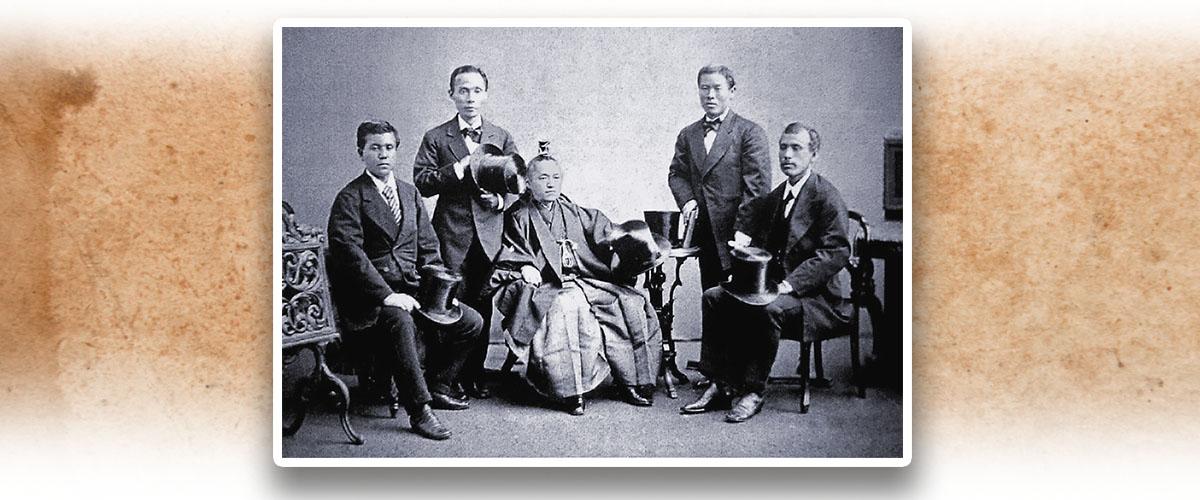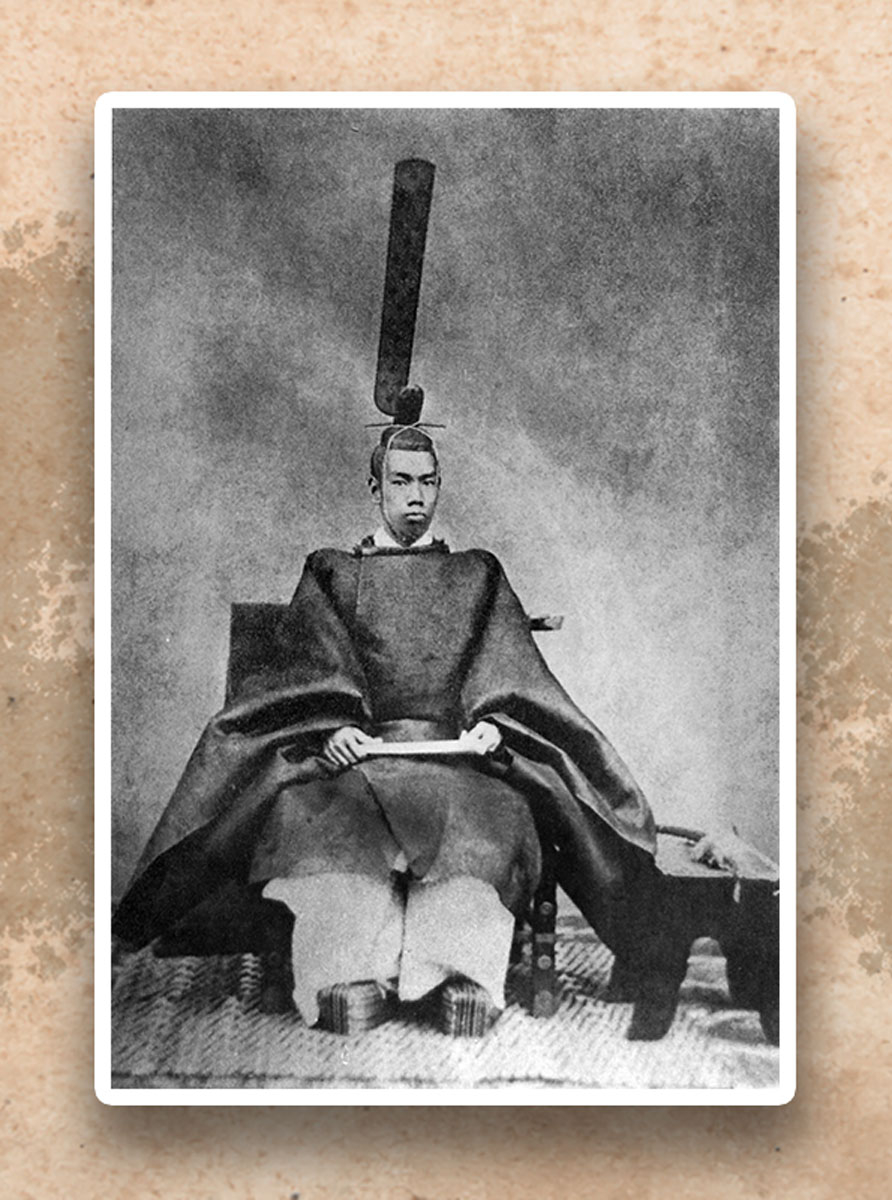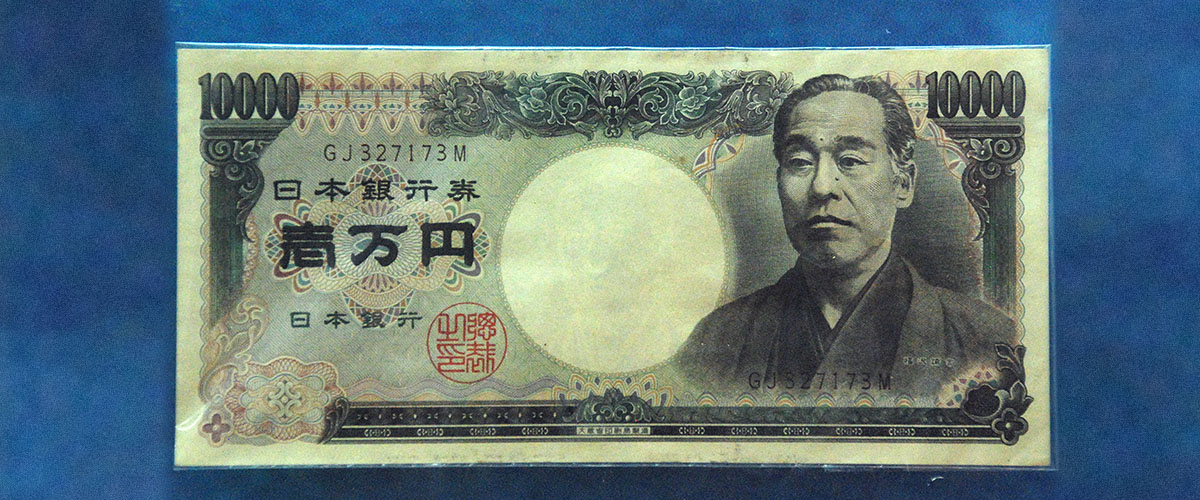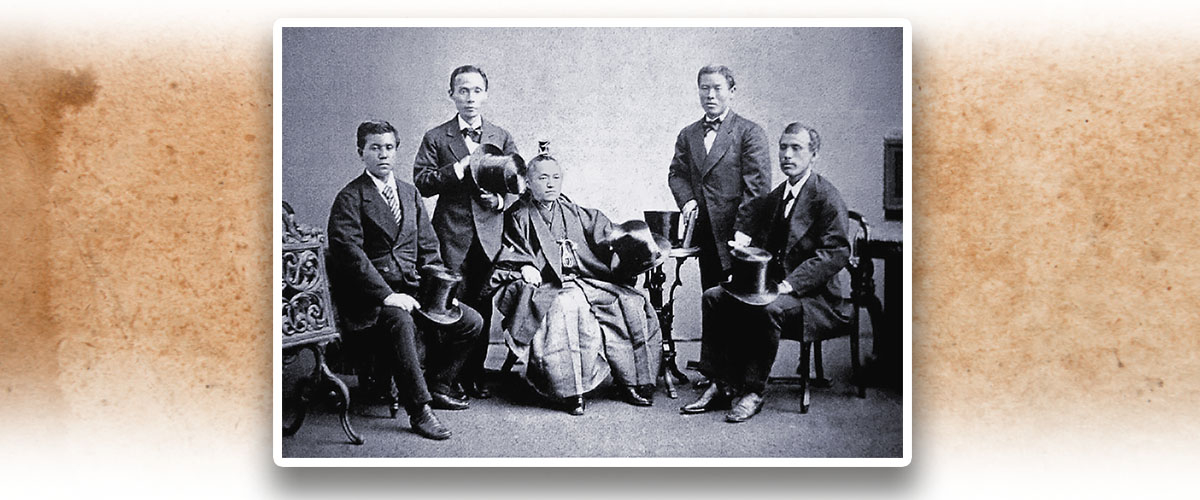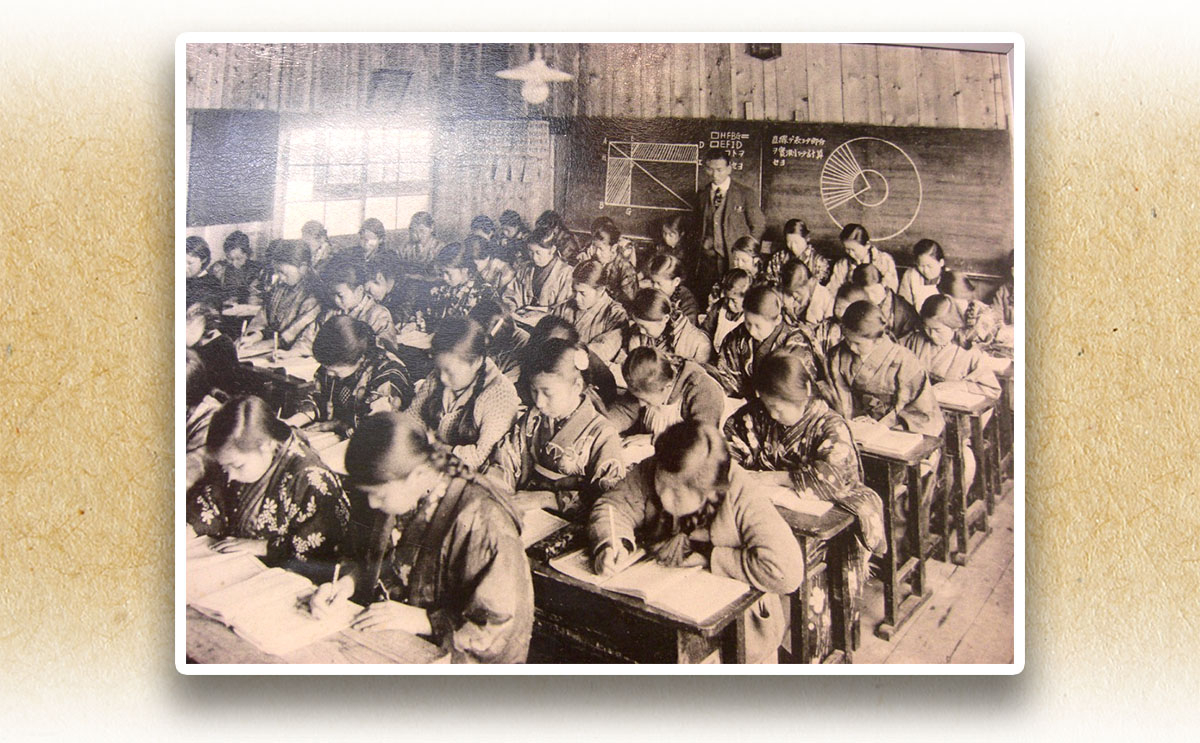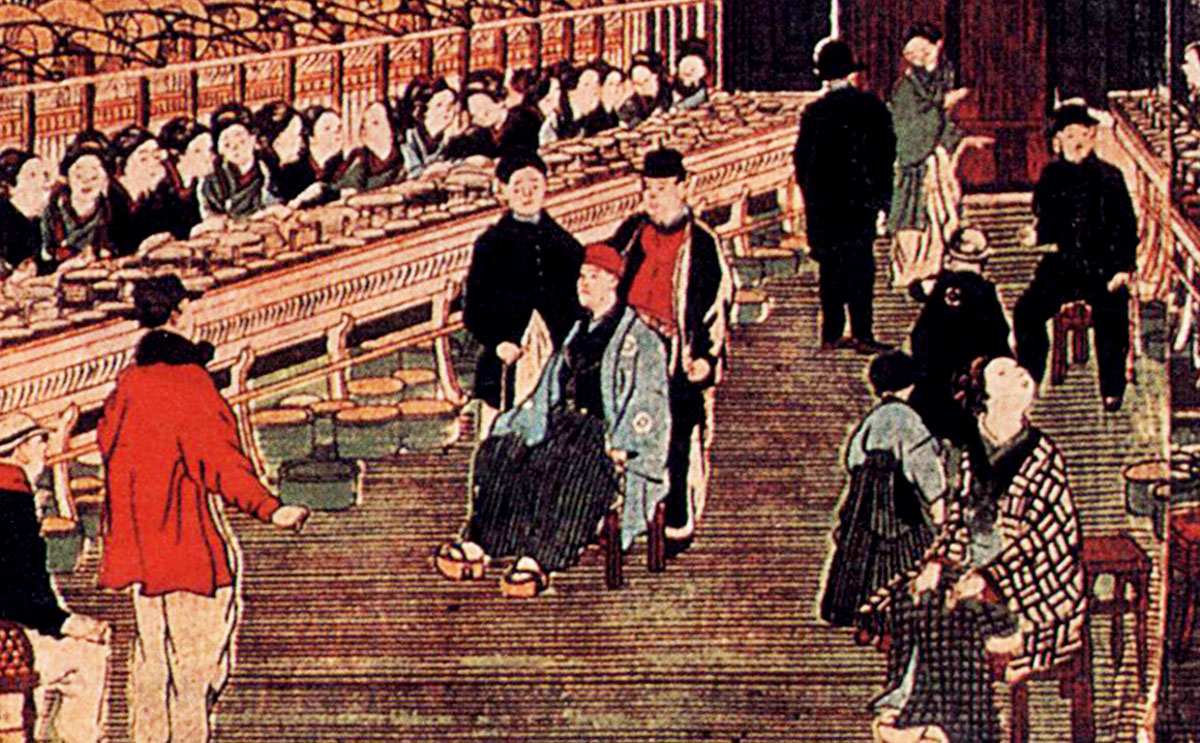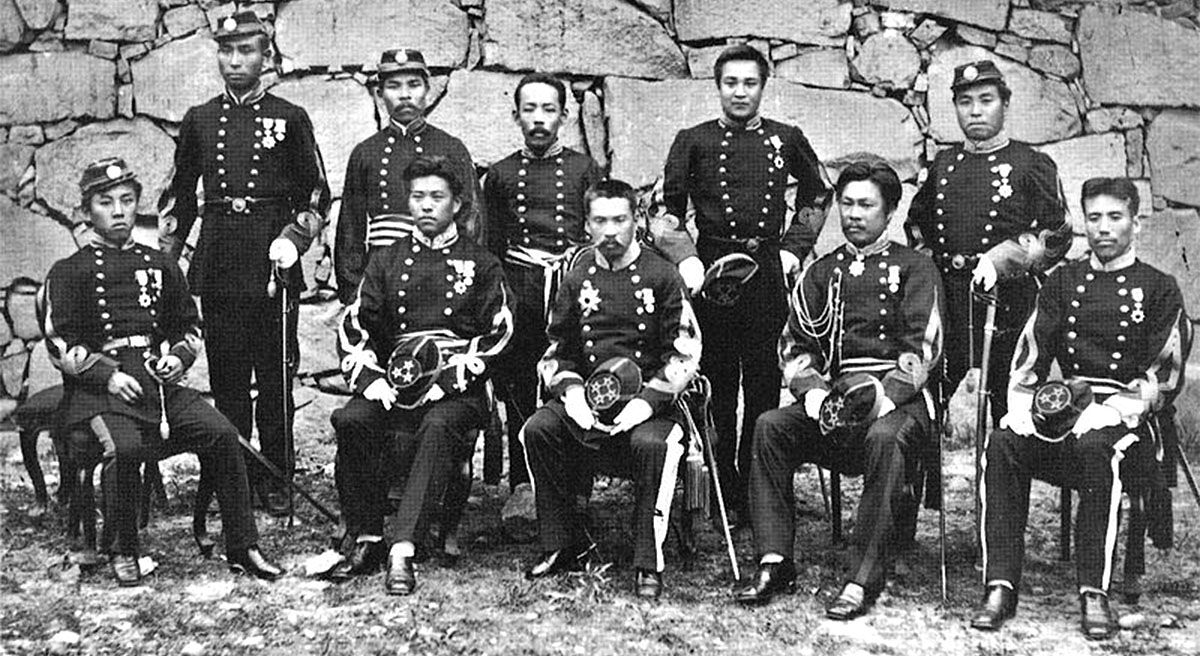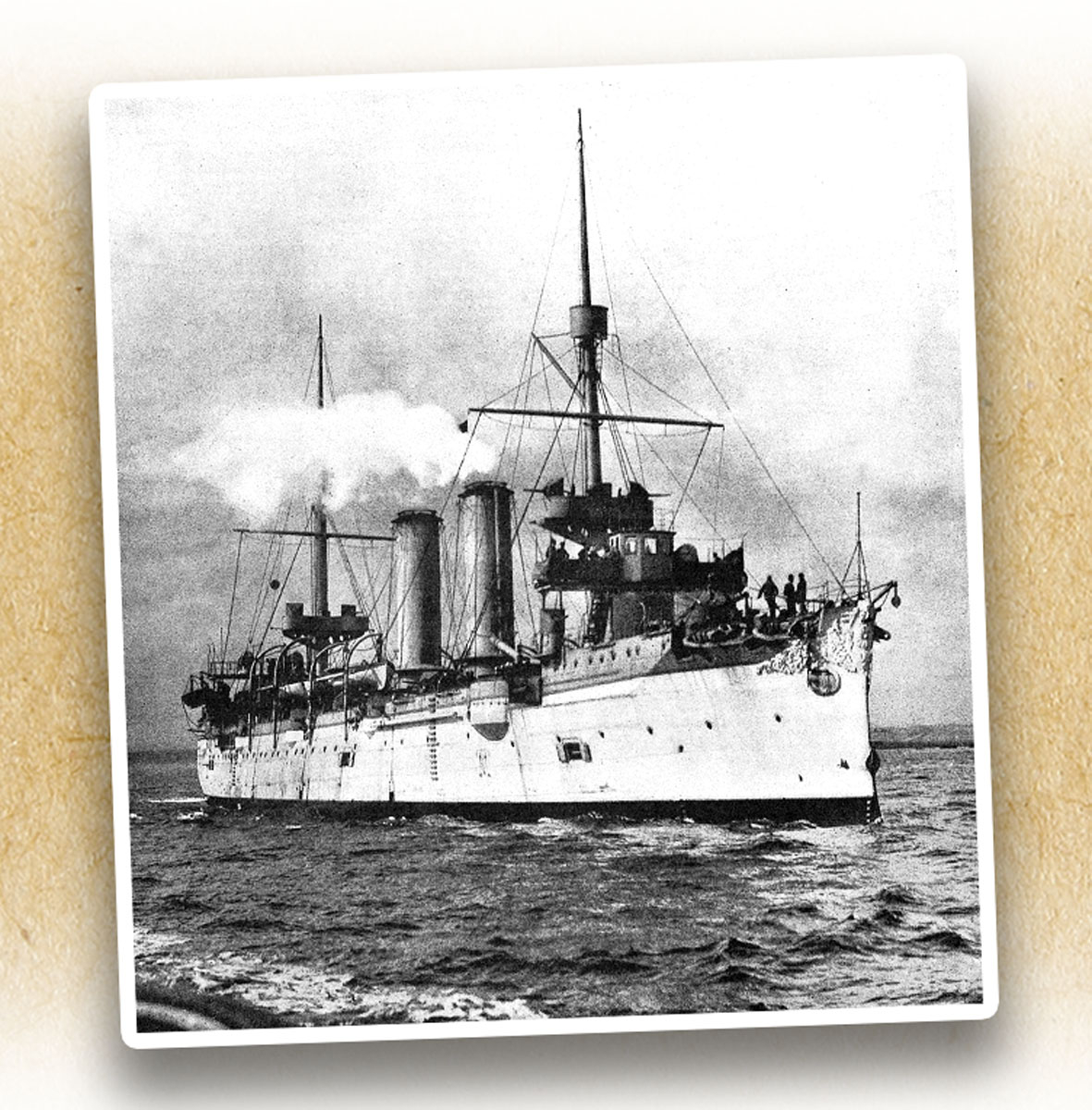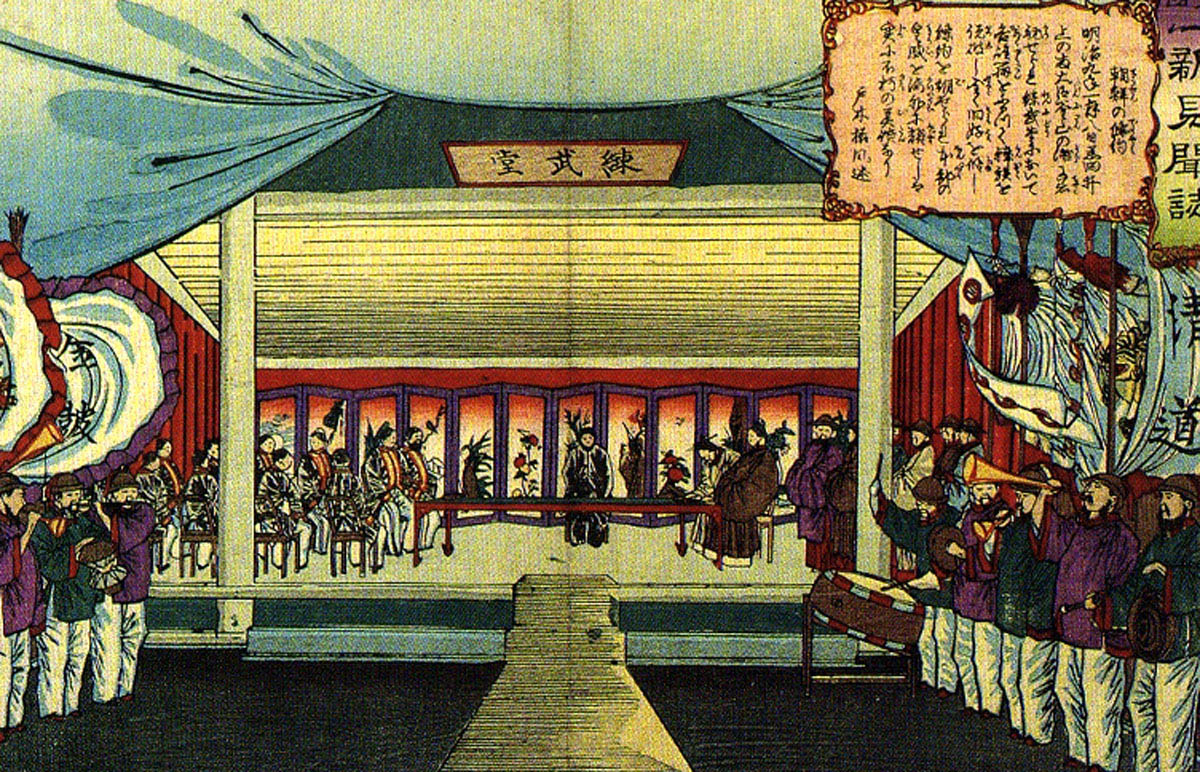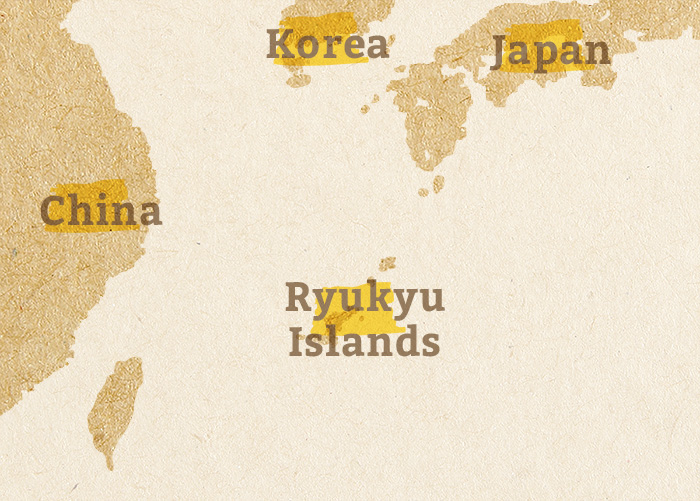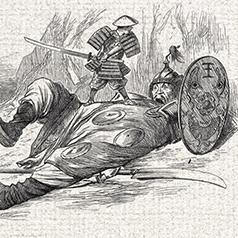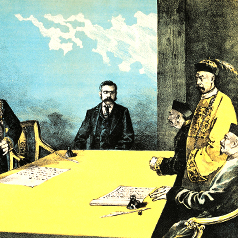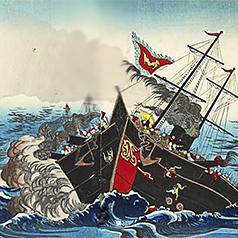Japan remained a secluded nation under the feudal rule of the Tokugawa shogunate until US naval warships arrived in 1853 to force the opening of Japanese ports, ratified by the Convention of Kanagawa. Under the slogan of “sonno joi” (revere the Emperor, expel the barbarians) Japanese reformists started a war against the shogunate. The shogunate was overthrown in 1867. Emperor Meiji succeeded to the throne the following year and began a period of reform featuring the adoption of Western learning, capitalism and a constitutional monarchy. Japan was the first in Asia to industrialize, a process that characterized the Meiji Restoration.
As it modernized, Japan also became increasingly aggressive, militaristic and expansionist. Japan forced Korea (a tributary state of China) to sign the Treaty of Ganghwa in 1876, annexed the Ryukyu Islands (a Chinese dependency which was later renamed Okinawa) in 1879 and formulated a policy known as the Strategy for Conquering the Qing Dynasty in 1887. Japan’s Continental Policy promoted the sequential invasion of Taiwan, Korea, Manchuria and the rest of China before conquering all of Asia and the world. China and Japan were simultaneously modernizing their military; war was inevitable.
|
|
The Japanese monarchy survived despite a series of reforms. What was the degree of democratization? |
|
|
See answer below. |
US warship illustrated by a Japanese artist. In 1853, US warships arrived in Japan. By the following year, they had forced the Japanese Bakufu government to sign the Convention of Kanagawa, which forced Japan to enter into trade with the US. Considered a grave humiliation by the Japanese people, this sparked anti-Bakufu campaigns and calls for reforms.
Prior to the arrival of the US warships (or Black Ships as the Japanese called them), Japan was ruled by the Tokugawa shogunate and kept isolated from the world by the strictly enforced sakoku (closed country) foreign policy. When the Bakufu shogunate showed itself powerless to carry out its mandate of jōi (expel the barbarians) and was forced to sign an unequal treaty when threatened by American warships, its authority was greatly undermined. Rallying under the slogan of “sonno joi” (revere the Emperor, expel the barbarians) new-era samurai and anti-Bakufu forces worked together to overthrow the conservative forces headed by the Bakufu government forcing it to relinquish power to the Emperor. United under the Emperor, the country proceeded to carry out reforms. By the time of the Meiji Restoration, the old guard had been weeded out. The Emperor and the imperial court were in a position to lead Japan through reform. By contrast, China had long been ruled by a conservative and corrupt government that impeded reform at every turn, and was hopelessly outclassed by Japan when it came to implementing reforms.
The young Emperor Meiji. In 1867, upon the death of Emperor Kōmei, Prince Mutsuhito succeeded to the throne and became Emperor Meiji a year later at the age of 16, marking the era of the Meiji Restoration.
The Emperor represents the Japanese monarchy and is the head of state. Emperor Jimmu – enthroned in 660 BC – was Japan’s first emperor, inaugurating a single monarchical system, unlike the dynasties of China. Although political power lay in the hands of the Shogun, the Emperor remained highly respected as a national symbol and served to unite the country decisively in critical times.
Fukuzawa Yukichi was a reform-minded thinker during the Meiji Restoration and an advocate of comprehensive modernization and Western learning – contrary to the superficial adoption of reform during the Self-Strengthening Movement in China. His portrait is depicted on the Japanese 10,000-Yen banknote.
During the Meiji Restoration, Japanese delegations travelled frequently to the US and Europe where they carefully studied how the West had become so advanced. The picture shows members of the Iwakura Mission before their departure in December 1871. From the left, Kido Takayoshi, Yamaguchi Masuka, Iwakura Tomomi, Itō Hirobumi and Ōkubo Toshimichi were among the elite reformists of modern Japan.
A new form of mandatory education was introduced for boys and girls alike to improve literacy during the Meiji period.
By importing machinery and adopting the corporate management system of the West, Japan strived to prosper from industrial and commercial development. Pictured is a textile factory.
Modernized Japanese soldiers during the Meiji Restoration. The Japanese army was modernized through westernized training and techniques during the Meiji period. Japan also introduced mandatory military service among men and medical training among women in preparation for war as a nation. Besides guns and cannons, Kendo (a traditional Japanese martial art) and Bushido (a samurai code of honor) were emphasized.
A Japanese warship of the Meiji period. The capability of Japan’s navy was of great strategic importance for the island nation. By the First Sino-Japanese War of 1894, Japan had become the major naval power in East Asia.
When Emperor Meiji realized that Japan’s navy was inadequate, he ordered the expenses of the imperial household to be reduced by 300,000 yen annually and arranged a 10% salary increase among civil and military officials to be used to expand the country’s naval capability. To boost morale, he insisted on saving money for warships by consuming a single meal a day, and he was enthusiastically received across the nation. As a result, Japan’s navy grew rapidly.
The Meiji Restoration’s initial success bolstered the Japanese, who began to show their expansionist ambitions. In February 26, 1876, Japan forced Korea to sign the unequal Treaty of Ganghwa. This granted Japan the right to conduct surveys and map operations in the seas off the Korean coastline, in addition to consular jurisdiction and preferential trade treatment and other unilateral rights. Although Korea was a tributary state of China at that time, the Qing court made no protest. The picture shows Japanese and Korean representatives signing the Treaty of Ganghwa.
In 1879, Japan annexed the Ryukyu Islands, a Chinese dependency which was later renamed Okinawa, encountering little resistance. Korea became Japan’s next target.
|
|
The Japanese monarchy survived despite a series of reforms. What was the degree of democratization? |
|
|
As island countries in Asia and Europe, Japan and Britain were the first to initiate political reform and industrialization in the context of a constitutional monarchy. Both countries achieved significant economic and technological development as well as a high level of democracy and freedom. Their neighbors, China and France, were deeply rooted in rule by absolute monarchs until they were abolished and replaced by republics through revolution. Japan and Britain were similar in that political power rested with a parliament from whose members a prime minister emerged. Monarchy was preserved in these countries because of historical reasons and this factor alone should not be used to assess the degree of democratization. |
Source of most photos used in this feature piece: Fotoe (pictures 1, 3 and 8), misc. photo sources.




